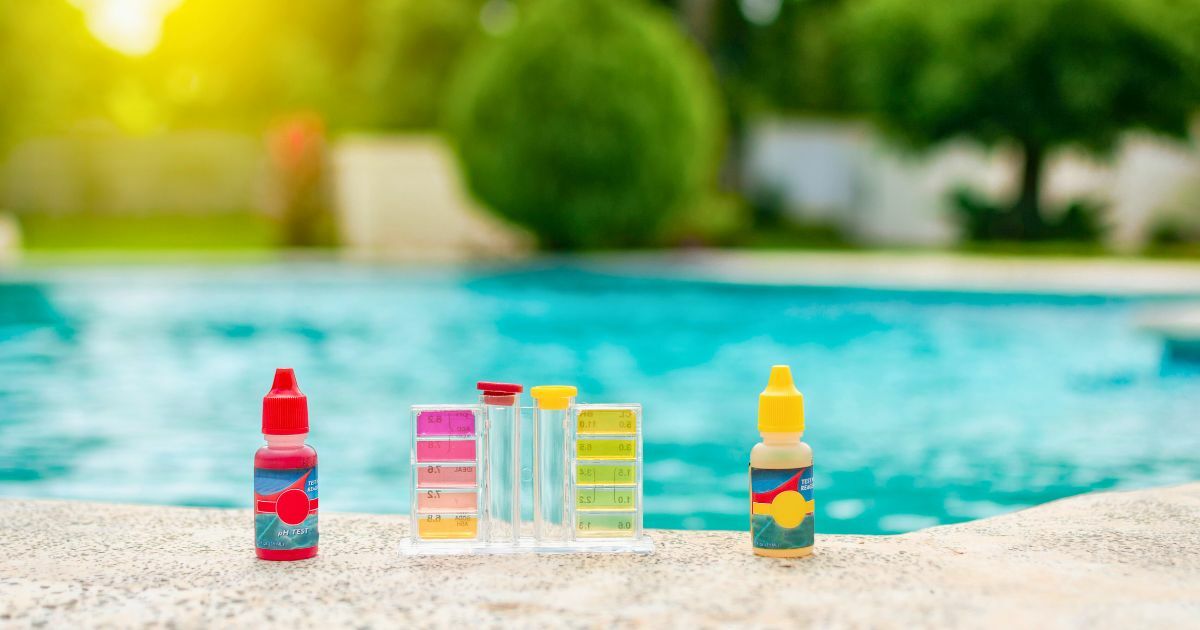Managing Pool Chemistry During Heatwaves: A Summer Survival Guide

Managing Pool Chemistry During Heatwaves: A Summer Survival Guide
- June 5, 2025
- Uncategorized
When June temperatures soar into the triple digits, your swimming pool becomes more than just a luxury—it transforms into a sanctuary from the relentless heat. However, these same scorching conditions that make your pool irresistible also create a perfect storm of chemical challenges that can turn crystal-clear water into a murky, unsafe swimming environment faster than you can say "cannonball."
The Heat Factor: Understanding What's Really Happening
Extreme heat doesn't just make you uncomfortable; it fundamentally alters your pool's chemistry in ways that catch many pool owners off guard. As temperatures climb above 85°F, chlorine begins breaking down at an accelerated rate through a process called photodegradation. The sun's intense UV rays essentially consume your sanitizer, leaving your water vulnerable to bacterial growth and algae blooms.
Simultaneously, higher water temperatures create an environment where bacteria and algae thrive. These microorganisms multiply exponentially in warm water, placing additional demands on your sanitization system. The result? Your usual chlorine levels that worked perfectly in May suddenly seem inadequate by mid-June.
Adding to this challenge is increased use of your pool. When temperatures spike, pools see more swimmers seeking relief, which introduces more contaminants—sunscreen, sweat, cosmetics, and organic matter—into the water. Each swimmer essentially doubles the chemical demand on your pool system during peak heat periods.
The Foundation: pH Balance Under Pressure
During heatwaves, maintaining proper pH levels becomes critically important yet increasingly difficult. High temperatures naturally drive pH levels upward, often pushing them beyond the ideal range of 7.2 to 7.6. When pH climbs above 7.8, chlorine effectiveness plummets dramatically—at pH 8.0, chlorine is only about 20% as effective as it is at pH 7.2.
Test your pH levels twice daily during extreme heat periods, ideally in the early morning and late evening when the sun's impact is minimized. Keep muriatic acid or sodium bisulfate readily available for quick pH adjustments. Don't wait for weekly testing during heatwaves—reactive management is essential.
Superchlorination: Your Heat Wave Secret Weapon
Standard chlorine levels of 1-3 ppm simply won't cut it during extended heat periods. Implement a superchlorination strategy by maintaining chlorine levels between 5-7 ppm during peak heat days. This elevated level compensates for the accelerated chlorine consumption while ensuring adequate sanitization despite the increased organic load.
Consider switching to stabilized chlorine products containing cyanuric acid, which acts as a sunscreen for your chlorine molecules. However, monitor cyanuric acid levels carefully—they should stay between 30-50 ppm. Excessive levels create chlorine lock, where your sanitizer becomes ineffective regardless of concentration. If you're unsure about which products work best for your specific pool setup, the knowledgeable staff at Rising Sun Pools & Spas can recommend the right stabilized chlorine products for Triangle area conditions.
Shock Treatment: Timing Is Everything
During heatwaves, shock your pool every few days rather than weekly. The key is timing—shock treatments should occur after sunset when UV rays won't immediately break down the chlorine. Use calcium hypochlorite shock for maximum effectiveness, applying 1 pound per 10,000 gallons of water.
Pre-dissolve shock in a bucket before adding to prevent bleaching of pool surfaces. Never shock a pool with swimmers present, and wait until chlorine levels return to safe ranges before allowing swimming to resume.
Filtration: Working Overtime
Your filtration system needs to work harder during heat waves. Run your pump and filter for 12-16 hours daily, compared to the typical 8-10 hours. This extended operation helps circulate chemicals more effectively and removes contaminants before they can overwhelm your sanitization system.
Clean your filter more frequently—potentially every few days instead of weekly. A dirty filter restricts water flow and reduces chemical distribution, creating dead zones where algae can establish footholds.
Algae Prevention: Strike Before They Strike
Algae spores lie dormant in all pools, waiting for the perfect conditions to bloom. Heat waves provide those conditions in abundance. Use preventive algaecide treatments, using a quality copper-based or polyquat algaecide according to manufacturer directions.
Focus on areas with poor circulation—behind ladders, in corners, and around steps. Brush these areas daily during extreme heat to prevent algae from gaining traction.
Water Level Management
Increased evaporation during heat waves can drop water levels below skimmer intakes, reducing circulation and chemical distribution. Check water levels daily and maintain them at the midpoint of your skimmer opening. Low water levels also concentrate existing chemicals, potentially creating imbalanced chemistry.
Professional Backup Plan
Despite your best efforts, extreme heat can overwhelm even diligent maintenance routines. Establish a relationship with a pool service professional before problems arise. Having expert help available during the most challenging heat periods can save both your sanity and your pool investment.
For Triangle area pool owners, Rising Sun Pools has been solving complex pool maintenance challenges since 1972, with over 50 years of experience dealing with North Carolina's demanding summer conditions. Their team understands the unique challenges our local climate presents and can provide solutions when heat waves push your pool chemistry to its limits.
Recognize when to call for help: persistent cloudiness despite proper chemical levels, recurring algae blooms, or equipment malfunctions during peak demand periods all warrant professional intervention.
Heat waves test every aspect of pool maintenance, but with proper preparation and vigilant monitoring, your pool can remain a refreshing oasis throughout June's most punishing days. Remember, prevention costs far less than remediation—both in terms of chemicals and your peace of mind.
Reach out today to find out how the Rising Sun experts can help!
Recent Posts
- How to Winterize Your Aboveground Pool in the Triangle
- Energy-Efficient Hot Tub Tips for Triangle Homeowners
- Investment Protection: How Regular Fall Maintenance Saves You Thousands
- Leaf Management: Protecting Your Pool from Fall's Beautiful Mess
- Why September May Be the Best Time to Start Planning Your Pool Project
- Why Pool Customers Can Trust Rising Sun Pools
- Hurricane Season Pool Protection: Essential Steps for Raleigh Pool Owners
- Extend Your Swimming Season: Why a Heated Pool is Perfect for North Carolina's Mild Winters
- Design Your Dream Backyard with Our Online Pool Builder Tool
- Six Reasons Why You Should Get a Fiberglass In-Ground Pool
